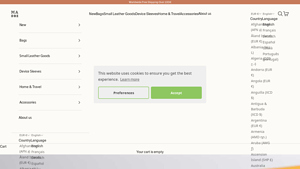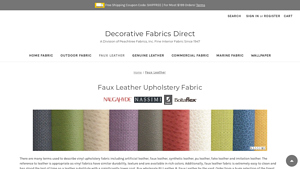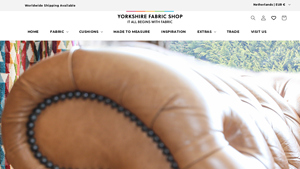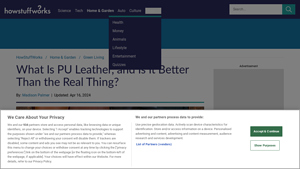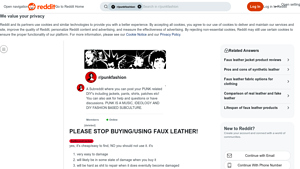Introduction: Navigating the Global Market for pu faux leather
Navigating the complexities of sourcing PU faux leather can be daunting for international B2B buyers, especially those from diverse markets such as Africa, South America, the Middle East, and Europe. As demand for sustainable and cost-effective materials rises, understanding the nuances of PU leather—its types, applications, and supplier vetting processes—becomes essential. This guide is designed to empower businesses by offering comprehensive insights into the world of PU faux leather, enabling informed purchasing decisions that align with both budgetary constraints and quality requirements.
Within these pages, you will discover various types of PU leather, including vegan options and their applications across multiple industries, from fashion to furniture. We delve into the critical aspects of supplier vetting, ensuring that buyers can identify reliable partners who adhere to ethical and quality standards. Additionally, the guide outlines cost considerations, providing a framework for evaluating the long-term value of PU leather products against their genuine counterparts.
By equipping B2B buyers with actionable insights and expert knowledge, this guide aims to simplify the sourcing process, reduce risks, and enhance the overall purchasing experience. Whether you are looking to expand your product line or seeking sustainable alternatives, understanding the global market for PU faux leather is a key step in making strategic business decisions that resonate with your target audience.
Table Of Contents
- Top 6 Pu Faux Leather Manufacturers & Suppliers List
- Introduction: Navigating the Global Market for pu faux leather
- Understanding pu faux leather Types and Variations
- Key Industrial Applications of pu faux leather
- 3 Common User Pain Points for ‘pu faux leather’ & Their Solutions
- Strategic Material Selection Guide for pu faux leather
- In-depth Look: Manufacturing Processes and Quality Assurance for pu faux leather
- Practical Sourcing Guide: A Step-by-Step Checklist for ‘pu faux leather’
- Comprehensive Cost and Pricing Analysis for pu faux leather Sourcing
- Alternatives Analysis: Comparing pu faux leather With Other Solutions
- Essential Technical Properties and Trade Terminology for pu faux leather
- Navigating Market Dynamics and Sourcing Trends in the pu faux leather Sector
- Frequently Asked Questions (FAQs) for B2B Buyers of pu faux leather
- Strategic Sourcing Conclusion and Outlook for pu faux leather
- Important Disclaimer & Terms of Use
Understanding pu faux leather Types and Variations
| Type Name | Key Distinguishing Features | Primary B2B Applications | Brief Pros & Cons for Buyers |
|---|---|---|---|
| 100% PU Leather | Fully synthetic, vegan-friendly, available in various colors | Upholstery, fashion accessories | Pros: Cost-effective, easy to clean, versatile. Cons: Less durable, can crack or peel over time. |
| Bicast Leather | Real leather base with a polyurethane coating | Furniture, automotive interiors | Pros: Combines real leather feel with affordability. Cons: Limited lifespan, may not be vegan. |
| Split Leather | Made from lower-quality leather, coated with PU | Budget-friendly products, fashion | Pros: Affordable, resembles genuine leather. Cons: Less durable, prone to wear and tear. |
| Bonded Leather | Recycled leather fibers bonded with PU | Low-cost furniture, accessories | Pros: Eco-friendly option, lower cost. Cons: Short lifespan, can lack authenticity. |
| Corrected Grain Leather | Real leather with a polyurethane finish for uniformity | High-volume production, fashion | Pros: Uniform appearance, cost-effective. Cons: Lacks the unique character of full-grain leather. |
What is 100% PU Leather and Its B2B Suitability?
100% PU leather is a fully synthetic material that is gaining popularity in various industries due to its affordability and versatility. It is entirely vegan and can be produced in a wide range of colors, making it suitable for fashion accessories and upholstery. However, buyers should consider its durability; while it is easy to clean and maintain, it may crack or peel over time, leading to potential replacement costs.
How Does Bicast Leather Compare in the Market?
Bicast leather features a genuine leather base that is coated with a layer of polyurethane. This combination provides a more authentic look and feel than 100% PU leather, making it ideal for applications in furniture and automotive interiors. Bicast leather is a cost-effective solution, but businesses should be aware that it may not be vegan and has a limited lifespan compared to higher-quality leather options.
What Makes Split Leather a Viable Option?
Split leather is derived from the lower-quality layers of animal hide and is coated with PU to enhance its appearance. It is often used in budget-friendly products and fashion items. While it offers a leather-like look at a lower price point, buyers should keep in mind its susceptibility to wear and tear, which can lead to frequent replacements, impacting overall cost-effectiveness.
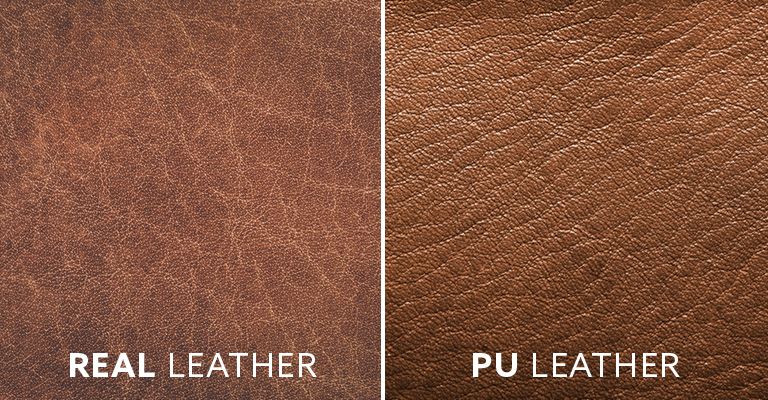
Illustrative image related to pu faux leather
Why Choose Bonded Leather for Eco-Friendly Solutions?
Bonded leather is made from recycled leather fibers that are bonded together with a polyurethane layer. This material is marketed as an eco-friendly option and is often used in low-cost furniture and accessories. Although it presents a sustainable alternative, buyers should note its shorter lifespan and potential lack of authenticity, which may not meet the quality standards for high-end applications.
What Are the Key Features of Corrected Grain Leather?
Corrected grain leather is a type of real leather that has been treated with a polyurethane finish to create a uniform appearance. This makes it suitable for high-volume production in the fashion industry. While it offers a cost-effective solution and a consistent look, it lacks the unique character and aging qualities of full-grain leather, which may be a consideration for buyers seeking premium products.
Key Industrial Applications of pu faux leather
| Industry/Sector | Specific Application of PU Faux Leather | Value/Benefit for the Business | Key Sourcing Considerations for this Application |
|---|---|---|---|
| Furniture Manufacturing | Upholstery for sofas and chairs | Cost-effective, easy maintenance, and variety in design | Ensure compliance with safety standards and durability |
| Automotive | Interior trim and seating | Lightweight, water-resistant, and customizable options | Evaluate resistance to wear, tear, and environmental factors |
| Fashion and Accessories | Handbags, wallets, and shoes | Affordable, trendy, and vegan-friendly alternative to leather | Source from reputable suppliers to ensure quality and ethical practices |
| Home Decor | Wall coverings and decorative items | Aesthetic appeal with easy cleaning and maintenance | Assess colorfastness and durability for long-term use |
| Sports Equipment | Protective gear and sports bags | Lightweight, durable, and water-resistant properties | Check for compliance with safety regulations and performance standards |
How is PU Faux Leather Used in Furniture Manufacturing?
In the furniture manufacturing sector, PU faux leather is widely used for upholstery on sofas, chairs, and other seating arrangements. Its affordability compared to genuine leather allows manufacturers to offer a stylish product at a lower price point. Additionally, PU leather is easy to clean and maintain, making it an attractive option for both residential and commercial spaces. For international buyers, especially from regions like Africa and the Middle East, sourcing PU leather that meets local safety and quality standards is crucial to ensure longevity and customer satisfaction.
What Role Does PU Faux Leather Play in the Automotive Industry?
In the automotive industry, PU faux leather is commonly utilized for interior trim, seating, and headliners. Its lightweight nature contributes to fuel efficiency, while its water-resistant properties ensure durability in various climates. PU leather can be customized in terms of color and texture, allowing automotive manufacturers to create appealing interiors that cater to diverse markets, including South America and Europe. Buyers must consider the material’s resistance to wear and tear, as well as its compliance with automotive safety standards.
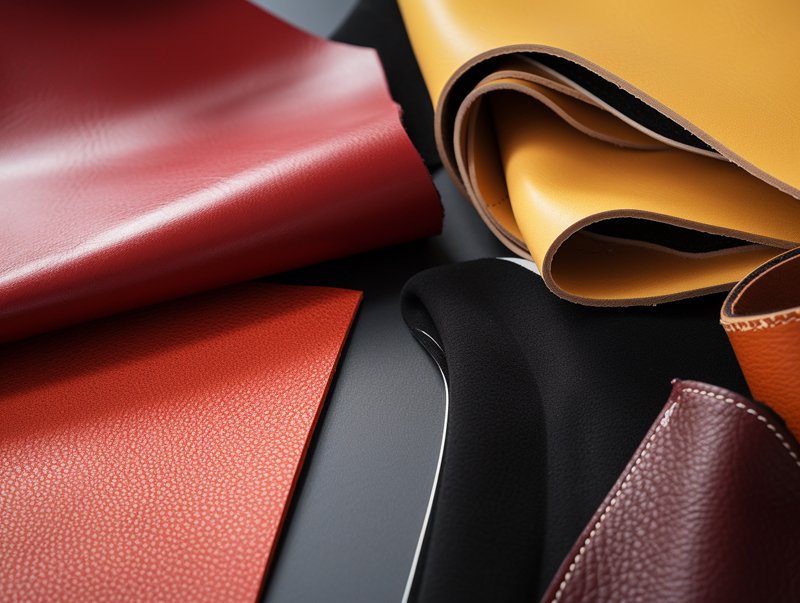
Illustrative image related to pu faux leather
How is PU Faux Leather Transforming Fashion and Accessories?
The fashion and accessories sector benefits significantly from PU faux leather in the production of handbags, wallets, and shoes. This synthetic material offers a stylish, vegan-friendly alternative that aligns with current consumer trends focusing on sustainability and ethical sourcing. For international B2B buyers, especially in Germany and other European markets, sourcing PU leather from suppliers with transparent manufacturing processes is essential to meet the increasing demand for ethically produced goods.
What Applications Does PU Faux Leather Have in Home Decor?
In home decor, PU faux leather is used for wall coverings, cushions, and various decorative items. Its aesthetic appeal, combined with easy maintenance, makes it a popular choice among interior designers and homeowners alike. The variety of colors and patterns available allows for creative design possibilities. Buyers should assess the colorfastness and durability of PU leather products to ensure they withstand wear and maintain their visual appeal over time.
How is PU Faux Leather Utilized in Sports Equipment?
PU faux leather is increasingly used in the sports equipment sector, particularly in protective gear and sports bags. Its lightweight and water-resistant properties enhance functionality, making it ideal for active lifestyles. For international buyers, especially those in regions with varying climates, evaluating the material’s performance standards and compliance with safety regulations is critical for ensuring the safety and satisfaction of end users.
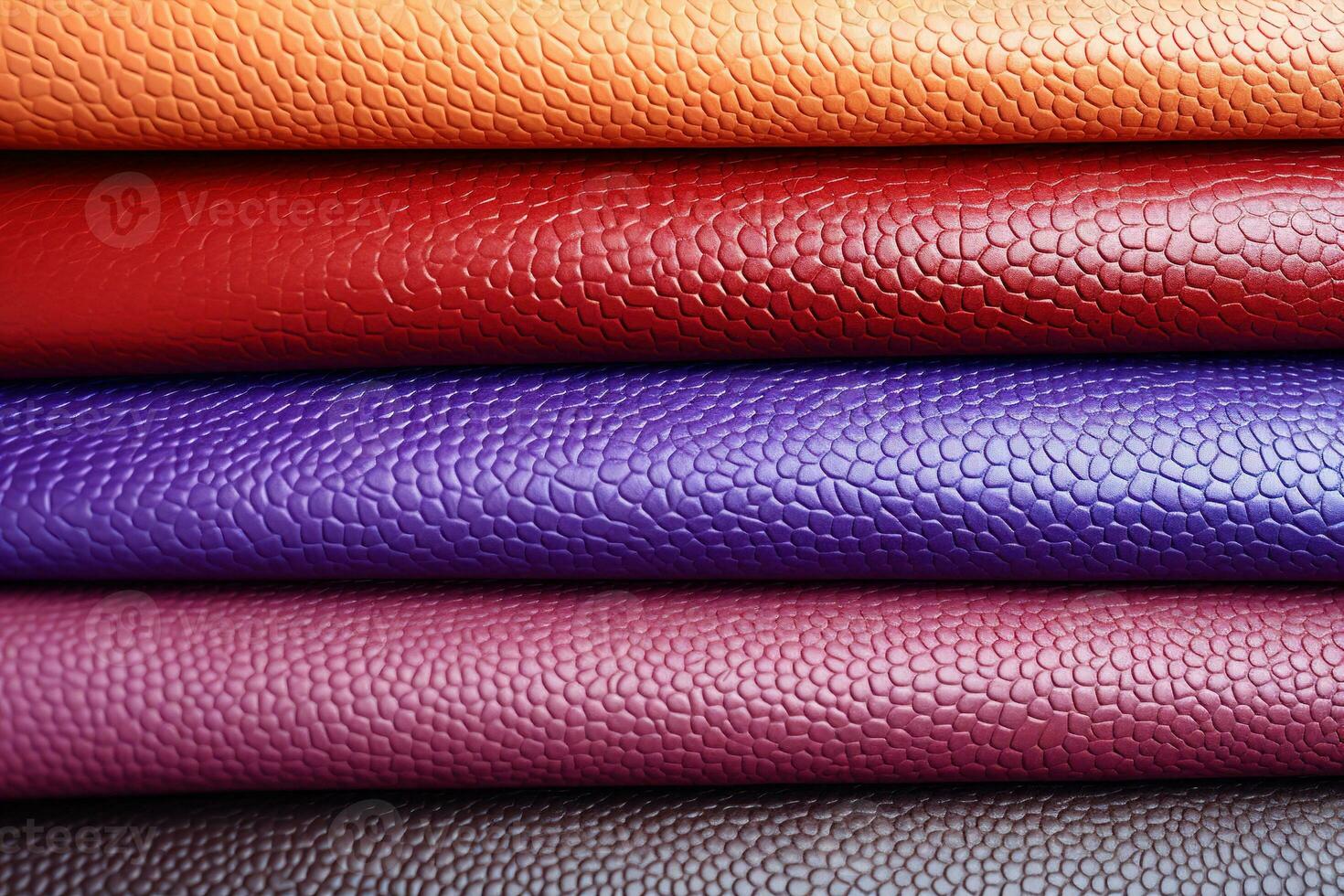
Illustrative image related to pu faux leather
3 Common User Pain Points for ‘pu faux leather’ & Their Solutions
Scenario 1: Durability Concerns for High-Use Applications
The Problem: B2B buyers in sectors like hospitality and furniture often face significant challenges when sourcing PU faux leather due to its perceived lack of durability. Products like chairs and sofas are subjected to daily wear and tear, and many buyers have experienced PU leather cracking, peeling, or losing its aesthetic appeal within a short period. This not only affects customer satisfaction but also leads to increased costs associated with replacements and repairs, undermining the initial investment.
The Solution: To address durability concerns, buyers should prioritize sourcing high-quality PU leather that is specifically designed for heavy use. Look for suppliers that offer products with reinforced backing and protective coatings that enhance durability and resistance to wear. Additionally, consider engaging in a thorough vetting process, including reviewing product samples and specifications, to ensure that the PU leather meets industry standards for durability. Establishing long-term relationships with reputable manufacturers who provide warranties can also safeguard against premature product failures, ultimately ensuring better customer retention and satisfaction.
Scenario 2: Misleading Product Labels and Quality Assurance
The Problem: Many B2B buyers encounter confusion due to ambiguous labeling practices in the PU faux leather market. Terms like “genuine leather” or “leather-like” can mislead buyers into purchasing lower-quality products that do not meet their expectations. This misalignment can result in products that fail to meet the desired aesthetic or functional standards, leading to costly returns and damaged reputations.
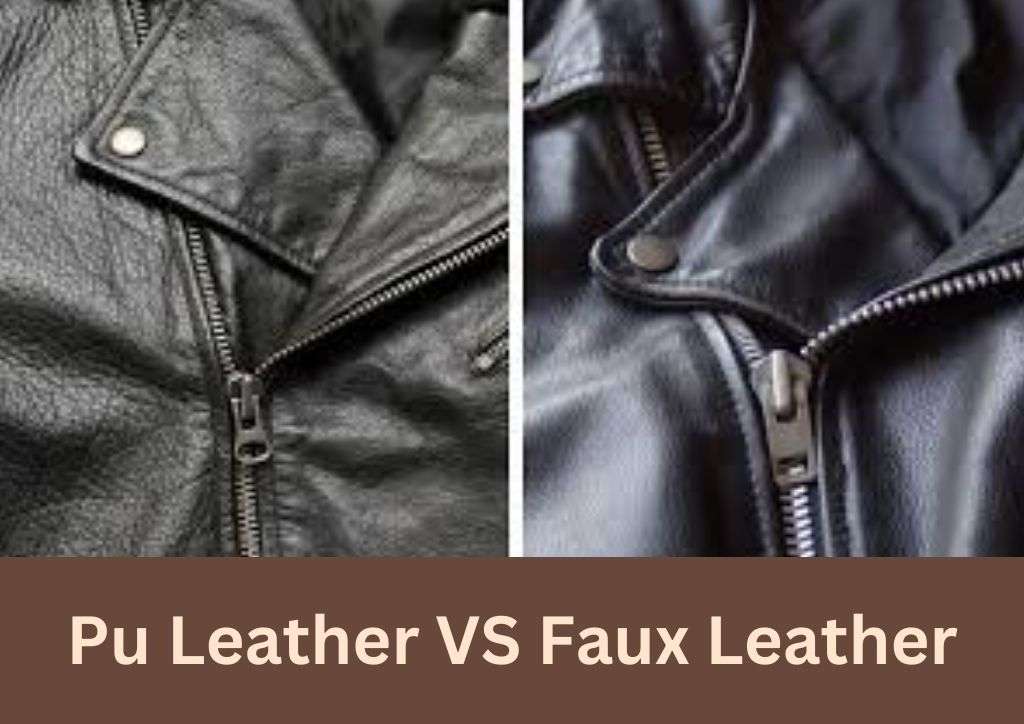
Illustrative image related to pu faux leather
The Solution: To combat this issue, buyers should adopt a rigorous product specification process that includes verifying the material composition and asking for detailed product descriptions from suppliers. Utilizing third-party certifications for sustainability and quality can provide additional assurance. Buyers are encouraged to request samples and conduct hands-on inspections to evaluate the texture, appearance, and smell of the materials before making bulk purchases. Furthermore, educating staff about recognizing authentic PU leather versus misleading labels can empower them to make informed decisions, ensuring that the products align with the company’s quality standards.
Scenario 3: Environmental Impact and Health Concerns
The Problem: Increasingly, B2B buyers are becoming aware of the environmental and health implications associated with PU leather production. Concerns about volatile organic compounds (VOCs) and the non-biodegradability of PU leather can pose significant risks to brand reputation and compliance with environmental regulations. Buyers in regions with stringent environmental policies, such as Europe, are particularly sensitive to sourcing practices that may affect their standing with consumers and regulatory bodies.
The Solution: To mitigate environmental risks, buyers should seek out suppliers committed to sustainable practices, such as using eco-friendly manufacturing processes and non-toxic materials. Investigating the supply chain transparency of potential suppliers is crucial; look for brands that provide clear information on their production methods and raw material sourcing. Additionally, opting for PU leather made from recycled materials or those with certifications that prove lower environmental impact can enhance the brand’s reputation. Incorporating this sustainability aspect into marketing strategies can also resonate with eco-conscious consumers, thereby differentiating your products in a competitive market.
Strategic Material Selection Guide for pu faux leather
What Are the Common Materials Used in PU Faux Leather?
When selecting PU faux leather for various applications, it is crucial to understand the different materials involved in its production. Each material offers unique properties, advantages, and disadvantages that can significantly impact product performance and suitability for specific markets. Below is an analysis of several common materials used in PU faux leather from a B2B perspective.
What Are the Key Properties of Polyurethane Coatings?
Polyurethane (PU) coatings are the primary component of PU faux leather. They provide a synthetic layer that mimics the appearance and texture of genuine leather. Key properties include excellent abrasion resistance, flexibility, and moisture resistance. PU coatings can withstand a range of temperatures, making them suitable for diverse environments.
Pros: PU coatings are cost-effective and allow for a wide variety of colors and finishes. They also offer ease of maintenance, as they can be wiped clean without the need for special cleaners.
Cons: However, PU coatings can be prone to cracking and peeling over time, particularly in high-stress applications. This limits their longevity compared to genuine leather.
Impact on Application: PU coatings are commonly used in furniture, automotive interiors, and fashion accessories. However, their performance can vary based on the specific formulation used.
Considerations for International Buyers: Buyers from regions like Europe and the Middle East should ensure compliance with local environmental regulations regarding VOC emissions and chemical safety standards, such as REACH in the EU.
How Do Textile Backings Influence PU Faux Leather?
Textile backings, such as polyester or cotton, are often used to provide structural support to PU faux leather. These materials enhance the durability and flexibility of the final product.
Pros: Textile backings improve the overall strength and tear resistance of PU faux leather, making it suitable for high-wear applications like upholstery and bags.
Cons: The choice of backing material can affect the breathability of the faux leather, which may not be suitable for all applications, particularly in warmer climates.
Impact on Application: Textile-backed PU faux leather is commonly used in high-end furniture and fashion products, where durability and aesthetic appeal are paramount.
Considerations for International Buyers: Buyers should consider the local climate and application requirements when selecting textile-backed PU faux leather, as different regions may have varying preferences for breathability and comfort.
What Role Do Additives Play in PU Faux Leather?
Additives, including plasticizers and stabilizers, are often incorporated into the PU formulation to enhance performance characteristics. These can improve flexibility, UV resistance, and overall durability.
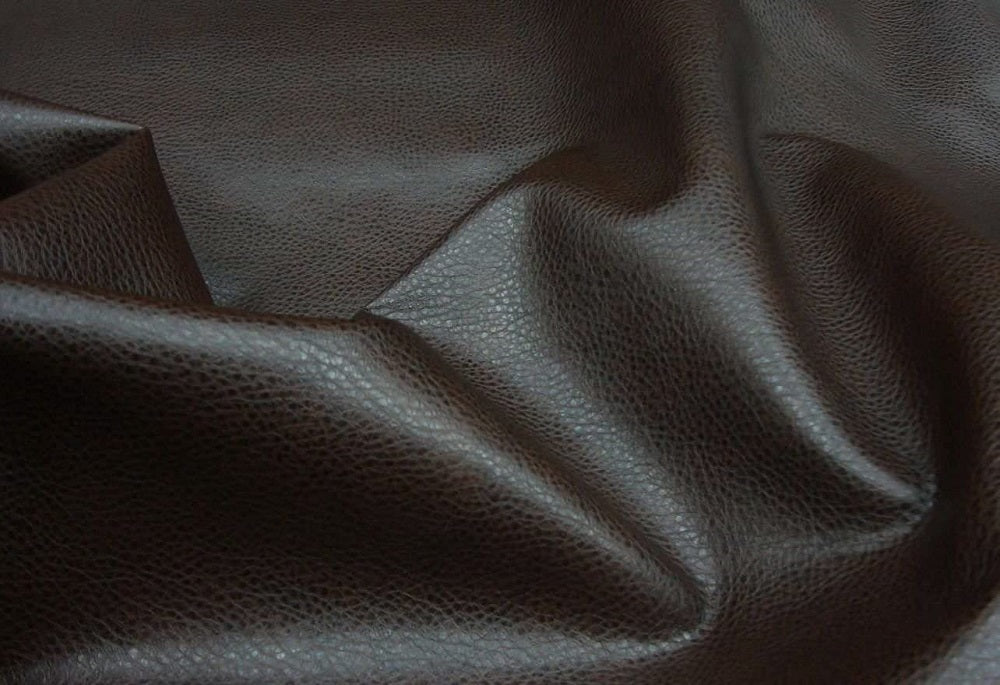
Illustrative image related to pu faux leather
Pros: The use of additives can significantly extend the lifespan of PU faux leather, making it more suitable for outdoor applications and environments with high UV exposure.
Cons: Some additives may introduce health and environmental concerns, particularly if they contain harmful chemicals. This can lead to compliance issues in certain markets.
Impact on Application: Additive-enhanced PU faux leather is ideal for outdoor furniture and automotive applications, where exposure to the elements is a concern.
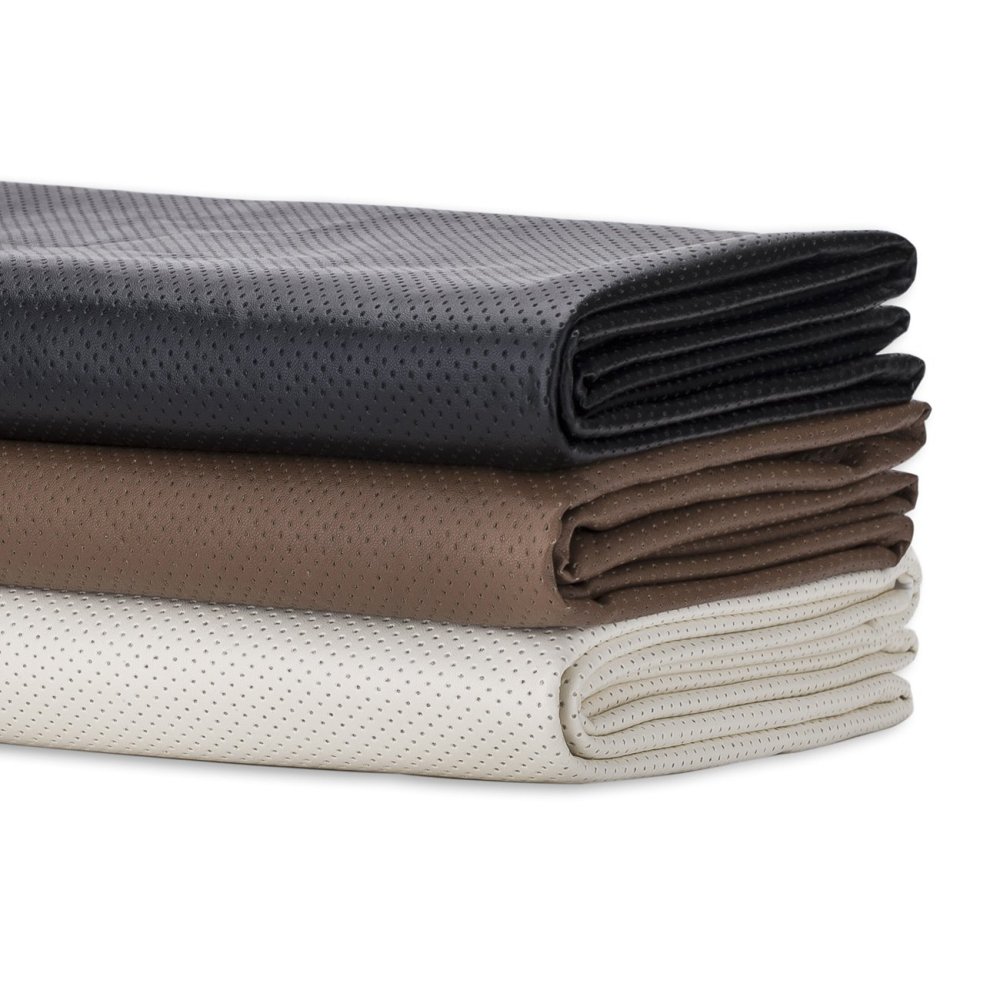
Illustrative image related to pu faux leather
Considerations for International Buyers: Buyers should be aware of the specific regulations regarding chemical additives in their regions, such as those outlined by ASTM or DIN standards, to ensure compliance and safety.
Summary Table of Material Selection for PU Faux Leather
| Material | Typical Use Case for pu faux leather | Key Advantage | Key Disadvantage/Limitation | Relative Cost (Low/Med/High) |
|---|---|---|---|---|
| Polyurethane Coatings | Furniture, automotive interiors | Cost-effective, variety of finishes | Prone to cracking and peeling | Medium |
| Textile Backings | Upholstery, bags | Enhanced durability and tear resistance | May lack breathability | Medium |
| Additives | Outdoor furniture, automotive | Improved UV resistance and longevity | Potential health and environmental concerns | Medium |
This guide provides a comprehensive overview of the materials commonly used in PU faux leather, highlighting their properties, advantages, and limitations. B2B buyers should consider these factors in conjunction with regional regulations and market preferences to make informed purchasing decisions.
In-depth Look: Manufacturing Processes and Quality Assurance for pu faux leather
In the competitive landscape of faux leather manufacturing, understanding the intricate processes and robust quality assurance measures is vital for B2B buyers. This section delves into the manufacturing processes of PU faux leather, highlighting key techniques and essential quality control (QC) protocols that ensure the production of high-quality materials.
What Are the Main Stages of PU Faux Leather Manufacturing?
The manufacturing of PU leather involves several critical stages, each contributing to the final product’s quality and performance. The primary stages include material preparation, forming, assembly, and finishing.

Illustrative image related to pu faux leather
How is Material Prepared for PU Leather Production?
The first stage involves the preparation of base materials, which typically consist of a fabric substrate, often polyester or cotton. This substrate is coated with a layer of polyurethane, a thermoplastic polymer that mimics the texture and appearance of genuine leather. The fabric is treated to enhance its adhesion properties, ensuring a strong bond with the polyurethane coating. This step may involve pre-treatments like cleaning and priming the fabric, which are crucial for achieving optimal quality.
What Techniques Are Used in the Forming Stage?
In the forming stage, the prepared substrate is coated with the polyurethane. This process can be achieved through various techniques, including:
- Roll Coating: A continuous process where the substrate passes through rollers that apply a uniform layer of polyurethane.
- Spray Coating: Involves spraying a fine mist of polyurethane onto the substrate, allowing for more intricate designs and patterns.
- Casting: A method where liquid polyurethane is poured onto the substrate and allowed to cure, forming a thicker layer.
Each technique has its advantages, such as varying thickness, texture, and finish, which can be tailored to specific market demands.
How is the Assembly Process Conducted?
Once the PU leather is formed, it undergoes an assembly process where it is cut and sewn into the desired product shapes. This may include items such as upholstery, garments, or accessories. During assembly, manufacturers often implement automated cutting technologies to enhance precision and reduce waste. Skilled labor is also crucial in this phase to ensure quality stitching and finishing touches.
What Finishing Techniques Are Applied to PU Leather?
The finishing stage adds the final aesthetic and functional characteristics to the PU leather. Techniques used in this phase include:
- Embossing: Creating patterns or textures that resemble genuine leather grains.
- Dyeing: Applying color to the PU leather, allowing for a broad spectrum of hues and designs.
- Coating: Adding additional layers of protective coatings to enhance durability and resistance to water or stains.
These finishing techniques are essential for meeting market trends and consumer preferences, particularly in diverse regions like Africa, South America, the Middle East, and Europe.
What Quality Assurance Measures Are Essential in PU Faux Leather Manufacturing?
Quality assurance is a critical aspect of PU leather production, ensuring that the final products meet international standards and buyer expectations. Several key measures are implemented throughout the manufacturing process.
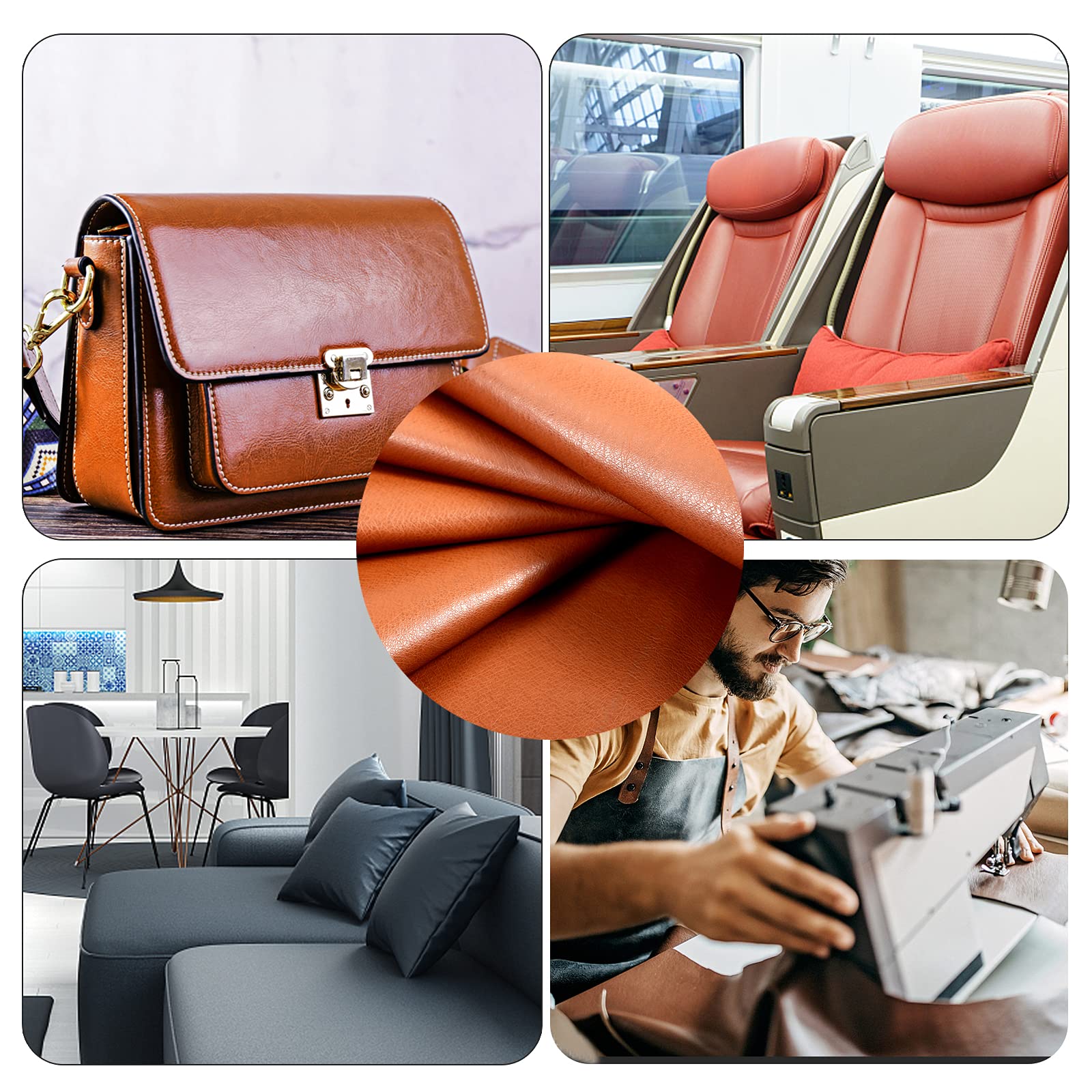
Illustrative image related to pu faux leather
Which International Standards Should B2B Buyers Be Aware Of?
To maintain high-quality standards, many manufacturers adhere to international certifications such as ISO 9001, which focuses on quality management systems. Additionally, compliance with specific industry standards, such as CE marking for products sold in Europe or API standards for certain applications, is crucial. These certifications provide assurance to buyers regarding the safety and reliability of the products.
What Are the Key QC Checkpoints in PU Leather Production?
Quality control checkpoints are strategically placed throughout the manufacturing process to catch defects early. These include:
- Incoming Quality Control (IQC): At this stage, raw materials are inspected for quality and compliance with specifications before production begins. This includes testing the substrate for strength and durability.
- In-Process Quality Control (IPQC): During the coating and forming stages, regular checks are conducted to ensure the consistency of the polyurethane application and adherence to standards.
- Final Quality Control (FQC): After assembly and finishing, the final products undergo rigorous testing for defects, color consistency, texture, and overall appearance. This final inspection is crucial before products are shipped to clients.
How Can B2B Buyers Verify Supplier Quality Control?
To ensure that suppliers maintain robust quality control measures, B2B buyers can undertake several actions:
- Conduct Supplier Audits: Regular audits of manufacturing facilities can provide insights into the quality control processes and adherence to international standards.
- Request Quality Reports: Suppliers should provide detailed reports on their quality control measures, including testing results and compliance certifications.
- Engage Third-Party Inspectors: Employing independent third-party inspection agencies can validate the quality of products before shipment, ensuring that they meet the required specifications.
What Nuances Should International B2B Buyers Consider Regarding QC?
For buyers from diverse regions, understanding the nuances of quality control is essential. For instance, regulations in Europe might differ from those in the Middle East or Africa. Familiarity with local standards and practices can help buyers avoid compliance issues and ensure that the products meet their market’s specific requirements.
In conclusion, the manufacturing processes and quality assurance measures for PU faux leather are multifaceted and crucial for producing high-quality products. B2B buyers must engage with suppliers who prioritize robust manufacturing processes and adhere to international quality standards to ensure that their procurement meets both performance and regulatory expectations.
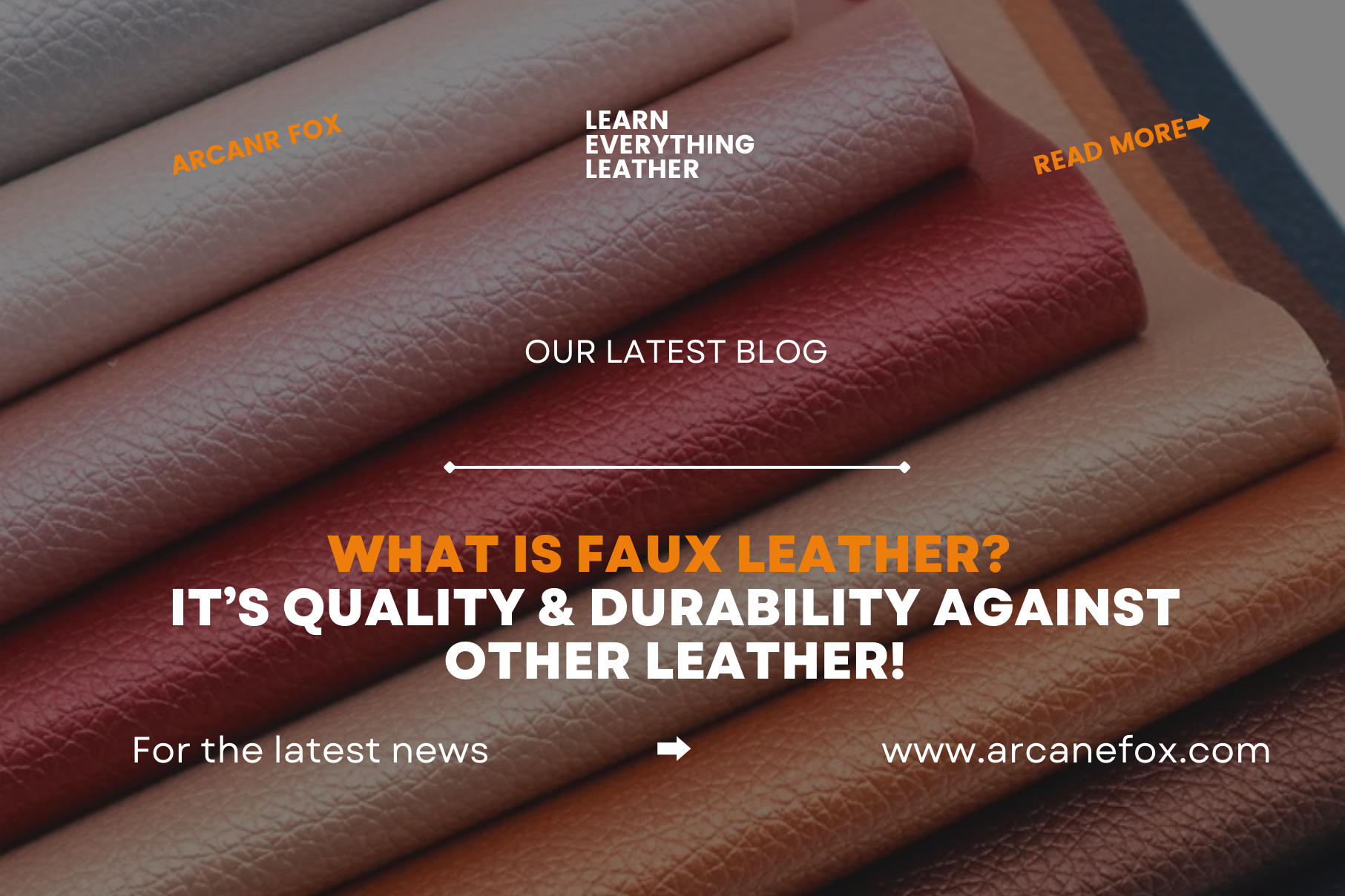
Illustrative image related to pu faux leather
Practical Sourcing Guide: A Step-by-Step Checklist for ‘pu faux leather’
In the competitive landscape of B2B procurement, sourcing PU faux leather requires a strategic approach to ensure quality, sustainability, and compliance. This guide offers a step-by-step checklist designed to help international buyers, especially from regions like Africa, South America, the Middle East, and Europe, navigate the complexities of purchasing PU leather.
Step 1: Define Your Technical Specifications
Clearly outline the specifications required for your PU leather products. This includes the desired thickness, texture, color options, and intended applications, such as upholstery, fashion, or accessories. Defining these parameters upfront helps you communicate your needs effectively to suppliers and ensures you receive samples that meet your expectations.
Step 2: Research Potential Suppliers
Conduct thorough research to identify suppliers with a proven track record in manufacturing PU leather. Look for companies that specialize in synthetic materials and have established relationships within your industry. Utilize platforms like trade shows, industry associations, and online directories to gather information and shortlist potential partners.
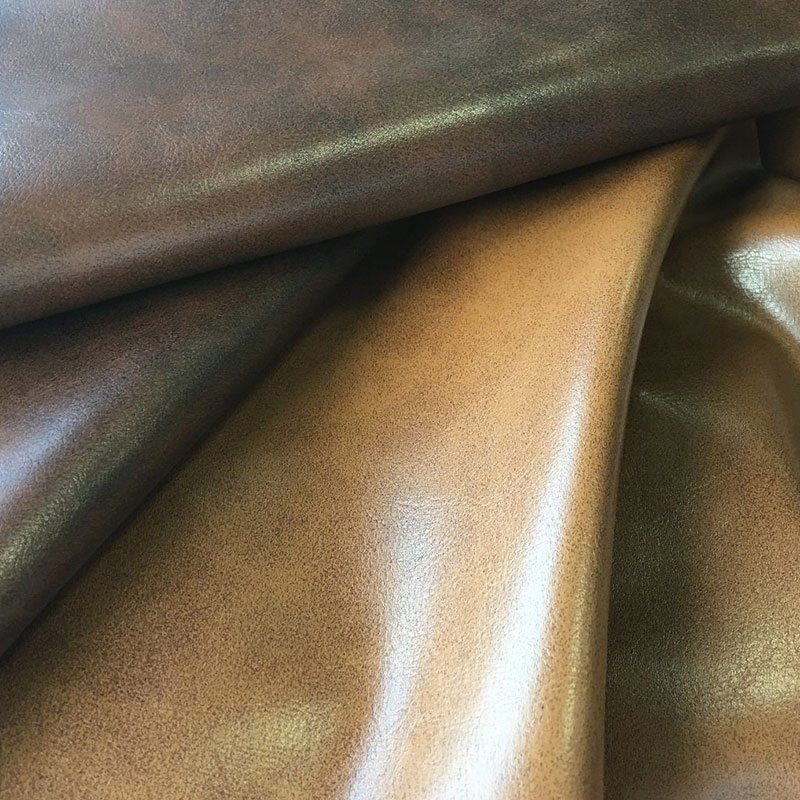
Illustrative image related to pu faux leather
Step 3: Evaluate Supplier Certifications
Verify that your potential suppliers hold relevant certifications, such as ISO 9001 for quality management or certifications indicating compliance with environmental standards. Certifications can provide assurance regarding the quality and safety of the materials, as well as the ethical practices of the manufacturer. Ensure that the suppliers can provide documentation to substantiate their claims.
Step 4: Request Material Samples
Always request samples of the PU leather before making a large order. This step is crucial as it allows you to assess the quality, texture, and durability of the material firsthand. Pay attention to factors such as the material’s feel, weight, and how it responds to common tests like water resistance or flexibility.
Step 5: Analyze Pricing Structures
Compare pricing from multiple suppliers to gauge market rates for PU leather. Look beyond just the unit cost; consider factors like minimum order quantities, shipping costs, and lead times. Understanding the total cost of ownership will help you identify suppliers who offer the best value without compromising on quality.
Step 6: Assess Production Capabilities
Ensure that your selected suppliers have the production capacity to meet your demand, especially if you anticipate scaling your orders. Inquire about their manufacturing processes, lead times, and flexibility in production to accommodate custom designs or urgent requests. This evaluation can prevent future supply chain disruptions.
Step 7: Negotiate Terms and Conditions
Once you have identified a suitable supplier, engage in negotiations to finalize terms and conditions, including payment terms, delivery schedules, and return policies. Clear agreements protect both parties and establish a foundation for a long-term partnership. Don’t hesitate to discuss potential volume discounts or loyalty incentives as well.
By following this structured checklist, B2B buyers can streamline the sourcing process for PU faux leather, ensuring they make informed decisions that align with their business goals and sustainability commitments.
Comprehensive Cost and Pricing Analysis for pu faux leather Sourcing
What Are the Key Cost Components in PU Faux Leather Sourcing?
When sourcing PU faux leather, understanding the cost structure is essential for informed decision-making. The primary cost components include:
-
Materials: The base cost of PU leather is influenced by the quality and type of materials used. Synthetic polymers, including polyurethane and fabric, determine the material cost. Higher-grade materials may incur additional costs but yield better durability and aesthetics.
-
Labor: Labor costs vary by region and complexity of production. Regions with lower labor costs can offer competitive pricing, but this may also affect quality. Skilled labor is often necessary for quality assurance and finishing touches.
-
Manufacturing Overhead: This includes utilities, facility maintenance, and administrative costs. Efficient factories can lower overheads, which can be passed on to buyers in the form of lower prices.
-
Tooling: The initial investment in molds and production tools can be significant, especially for custom designs. This cost is amortized over the production volume, making it a crucial factor for larger orders.
-
Quality Control (QC): Ensuring that the PU leather meets specific standards incurs additional costs. Rigorous QC processes can enhance product reliability but will increase the overall price.
-
Logistics: Shipping costs, including freight and customs duties, can vary widely based on the origin and destination. Selecting the right Incoterms can help manage these expenses effectively.
-
Margin: Suppliers will typically add a markup to cover their costs and profit margin. This can vary depending on the supplier’s market positioning and the perceived value of the product.
How Do Price Influencers Impact PU Faux Leather Costs?
Several factors influence the pricing of PU faux leather, particularly in the B2B landscape:
-
Volume and Minimum Order Quantity (MOQ): Larger orders often qualify for bulk discounts, which can significantly lower the per-unit cost. Understanding a supplier’s MOQ is essential for cost management.
-
Specifications and Customization: Customized products may incur additional costs due to the need for specialized materials or processes. Standardized products are typically more cost-effective.
-
Material Quality and Certifications: Certifications such as eco-friendliness or compliance with safety standards can increase costs. However, they may also enhance the product’s marketability and appeal.
-
Supplier Factors: The reliability and reputation of suppliers can affect pricing. Established suppliers may charge higher prices due to their reputation for quality and service.
-
Incoterms: The choice of Incoterms affects shipping costs and responsibilities. For instance, FOB (Free on Board) might be cheaper for buyers who can manage logistics, while CIF (Cost, Insurance, and Freight) offers a more hands-off approach but may be more expensive.
What Buyer Tips Can Enhance Cost-Efficiency in PU Faux Leather Sourcing?
For international B2B buyers, especially those from Africa, South America, the Middle East, and Europe, navigating the complexities of sourcing PU faux leather can be streamlined with the following strategies:
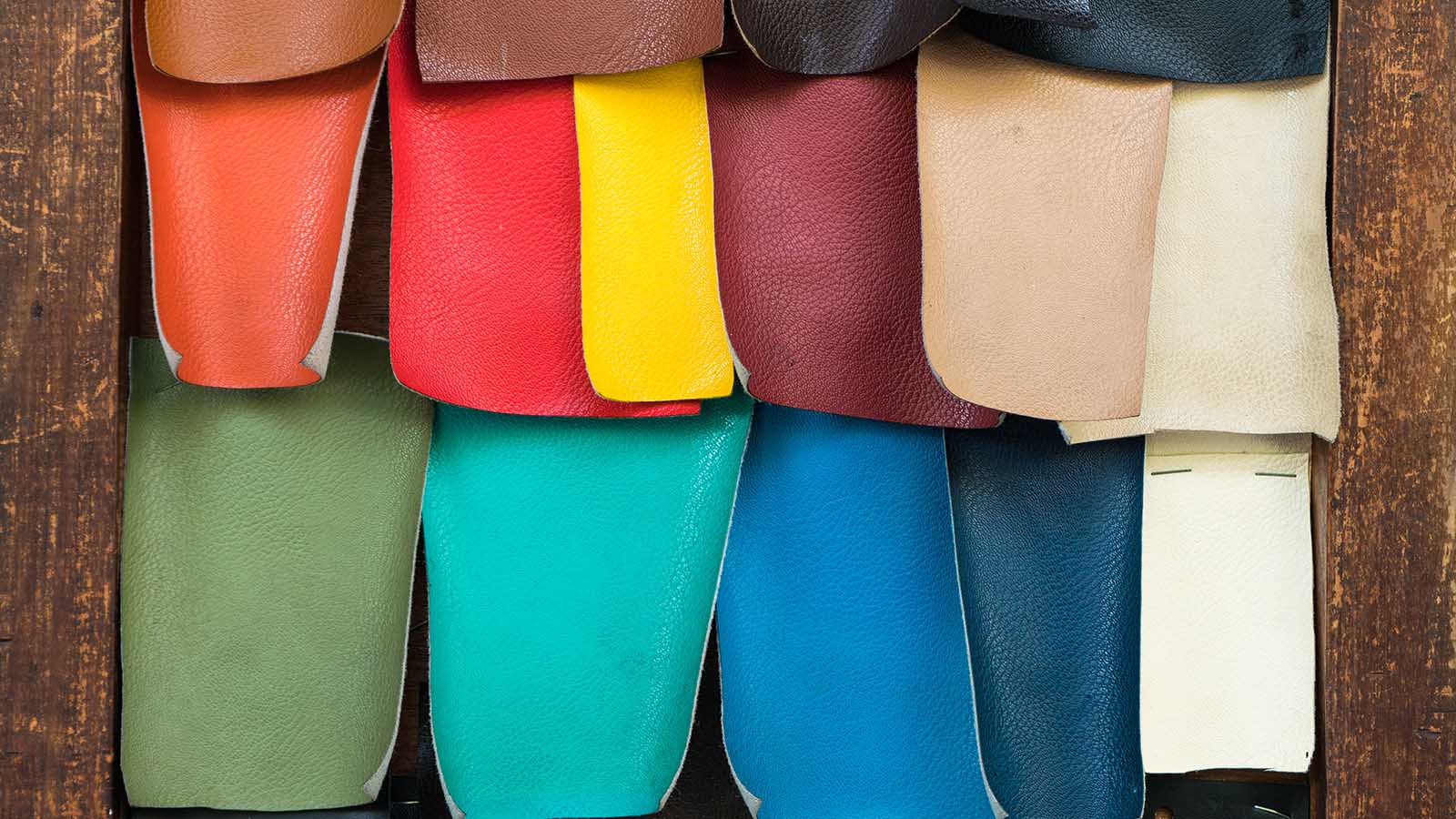
Illustrative image related to pu faux leather
-
Negotiation: Engage in discussions with suppliers to negotiate better prices, especially for bulk orders. Building a long-term relationship can also lead to more favorable terms over time.
-
Total Cost of Ownership (TCO): Consider not just the purchase price but also the long-term costs associated with maintenance, durability, and potential replacements. A higher upfront cost for better quality can result in lower overall expenses.
-
Understand Pricing Nuances: Be aware of regional pricing trends and fluctuations in currency exchange rates, which can impact the final cost. Additionally, explore local suppliers who may offer more competitive pricing due to lower shipping costs.
-
Request Samples: Before committing to a large order, request samples to evaluate quality. This helps ensure that the product meets your specifications and reduces the risk of costly returns.
Disclaimer on Indicative Prices
The prices associated with PU faux leather sourcing can fluctuate based on market conditions, supplier negotiations, and changes in raw material costs. It is advisable to conduct thorough market research and obtain multiple quotes to ensure competitive pricing.
Alternatives Analysis: Comparing pu faux leather With Other Solutions
Exploring Alternatives to PU Faux Leather for B2B Buyers
In the quest for materials that mimic the look and feel of genuine leather, PU faux leather has emerged as a popular choice. However, as B2B buyers explore options, it’s essential to consider various alternatives that may offer better performance, sustainability, and value. This analysis compares PU faux leather with two viable alternatives: Vegetable-Tanned Leather and Microfiber Leather.
| Comparison Aspect | PU Faux Leather | Vegetable-Tanned Leather | Microfiber Leather |
|---|---|---|---|
| Performance | Moderate durability; prone to cracking and peeling over time | High durability; develops a unique patina with age | Excellent durability; resistant to wear and tear |
| Cost | Lower initial cost | Higher initial investment; long-term cost-effective | Moderate cost; varies by quality |
| Ease of Implementation | Easy to source and manufacture | Requires specialized craftsmanship | Readily available; easy to work with |
| Maintenance | Simple cleaning; prone to staining | Requires occasional conditioning | Easy to clean; resistant to stains |
| Best Use Case | Fashion accessories, upholstery | High-end furniture, bags, and luxury goods | Sportswear, upholstery, and automotive interiors |
In-Depth Analysis of Alternatives
What Are the Advantages and Disadvantages of Vegetable-Tanned Leather?
Vegetable-tanned leather is made from natural materials and is known for its durability and eco-friendliness. This type of leather ages gracefully, developing a rich patina over time, which enhances its aesthetic appeal. However, its higher initial cost and the requirement for skilled craftsmanship can make it less accessible for certain projects. Additionally, maintenance involves occasional conditioning to ensure longevity.
How Does Microfiber Leather Compare to PU Faux Leather?
Microfiber leather is a synthetic alternative that closely resembles genuine leather in texture and appearance. It is highly durable, resistant to wear and tear, and easy to maintain, making it suitable for a variety of applications, from fashion to automotive interiors. While it typically falls within a moderate price range, the quality can vary significantly based on the manufacturer. Unlike PU leather, microfiber does not emit harmful chemicals and is often touted as a more environmentally friendly option.
Conclusion: Which Solution Should B2B Buyers Choose?
When considering alternatives to PU faux leather, B2B buyers should weigh their specific needs against the characteristics of each material. For projects demanding luxury and durability, vegetable-tanned leather stands out despite its higher initial cost. On the other hand, if budget constraints are critical, microfiber leather provides an excellent balance of durability and affordability. Ultimately, the choice should align with the intended use, desired longevity, and environmental considerations, ensuring that the selected material meets both functional and ethical standards.
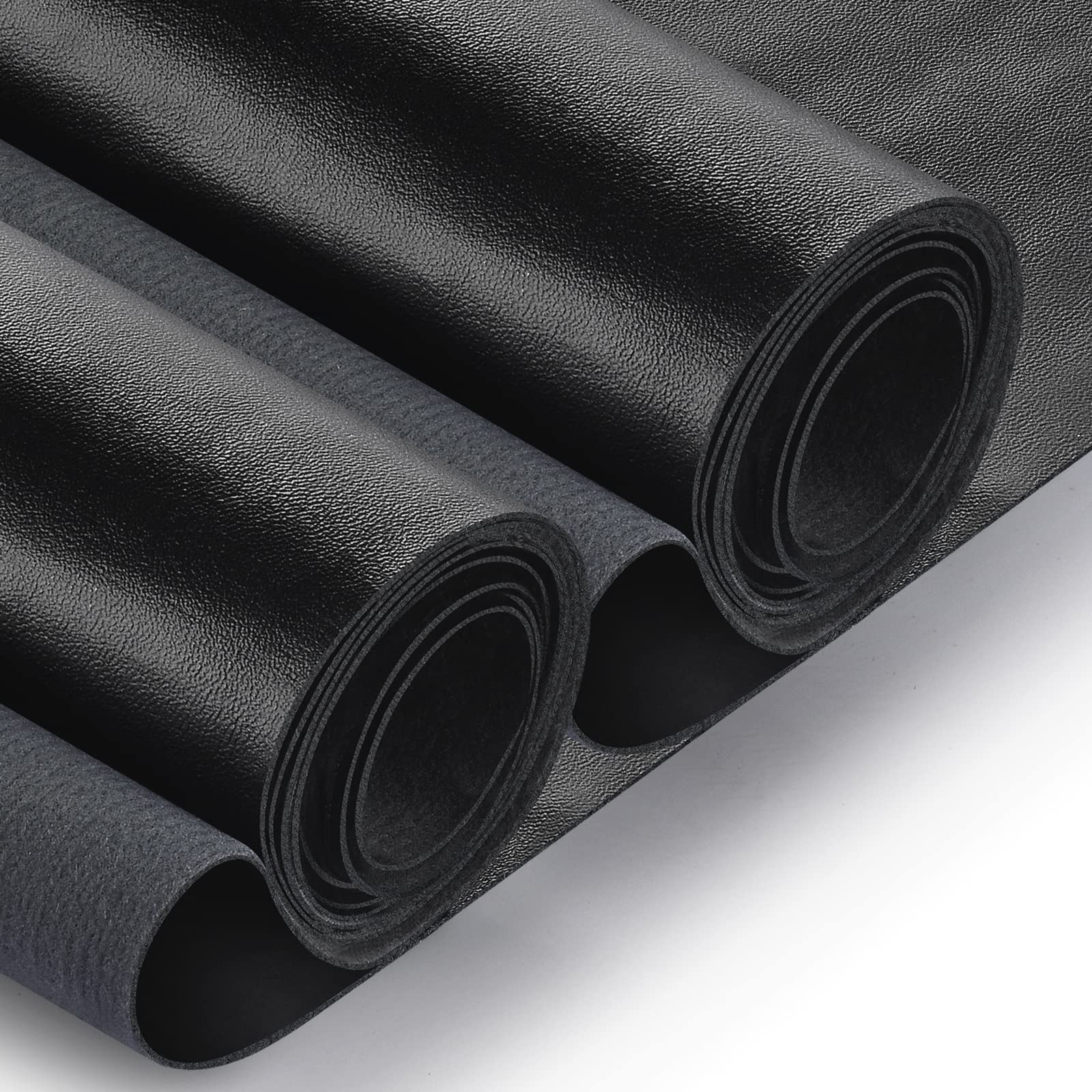
Illustrative image related to pu faux leather
Essential Technical Properties and Trade Terminology for pu faux leather
What Are the Key Technical Properties of PU Faux Leather for B2B Buyers?
Understanding the essential technical properties of PU faux leather is vital for B2B buyers seeking quality materials for their products. Here are some critical specifications to consider:
1. Material Composition
PU leather is primarily made from a thermoplastic polymer known as polyurethane, which is coated on a fabric base. This composition allows for a wide range of finishes and colors, making it versatile for various applications, including furniture and fashion. For B2B buyers, knowing the material composition helps in assessing the quality and suitability of PU leather for specific projects.
2. Thickness
The thickness of PU leather typically ranges from 0.5 mm to 2 mm. Thicker materials offer increased durability and resistance to wear, while thinner options may be more flexible and lightweight. Understanding thickness is essential for manufacturers as it affects production processes and end-use applications.
3. Abrasion Resistance
Abrasion resistance measures how well the material withstands friction over time. PU leather generally has a moderate to high abrasion resistance, making it suitable for high-traffic areas. Buyers should prioritize this property when sourcing materials for products that will experience heavy use, such as upholstery and automotive interiors.
4. Water Resistance
Unlike genuine leather, PU leather is inherently water-resistant, which simplifies maintenance and cleaning. This property is particularly beneficial for products in humid climates or those exposed to spills. B2B buyers should consider water resistance to ensure longevity and performance in their applications.

Illustrative image related to pu faux leather
5. VOC Emissions
Volatile Organic Compounds (VOCs) are chemicals released during the manufacturing of PU leather. These can affect indoor air quality and pose health risks. Buyers should inquire about VOC emissions to ensure compliance with environmental regulations and to promote safer use in products.
6. UV Stability
UV stability refers to the material’s resistance to fading and degradation when exposed to sunlight. PU leather with high UV stability is essential for outdoor applications or items placed in direct sunlight. Understanding this property helps buyers select materials that will maintain their aesthetic appeal over time.
What Are Common Trade Terminology and Acronyms Related to PU Faux Leather?
Familiarity with industry-specific jargon can facilitate smoother transactions and communication between buyers and suppliers. Here are key terms to know:
1. OEM (Original Equipment Manufacturer)
OEM refers to companies that produce components or products that are later rebranded by another company. For PU leather, an OEM might supply material that is then used in manufacturing furniture or accessories. Understanding OEM relationships is crucial for buyers looking to establish partnerships with manufacturers.
2. MOQ (Minimum Order Quantity)
MOQ is the smallest quantity of goods a supplier is willing to sell. Knowing the MOQ for PU leather is essential for B2B buyers to assess whether a supplier’s terms align with their production needs and budget constraints.
3. RFQ (Request for Quotation)
An RFQ is a document sent to suppliers to request pricing and terms for specific products. B2B buyers use RFQs to gather competitive quotes for PU leather, enabling informed purchasing decisions based on cost and quality.
4. Incoterms
Incoterms are international commercial terms that define the responsibilities of buyers and sellers in international transactions. Understanding Incoterms is crucial for buyers importing PU leather, as they dictate shipping responsibilities, risk transfer, and cost allocation.
5. Lead Time
Lead time refers to the time taken from placing an order to receiving the product. In the context of PU leather, shorter lead times can be advantageous for manufacturers needing quick replenishment for production lines. Buyers should consider lead times when planning inventory and production schedules.
6. Certification Standards
Certification standards ensure that PU leather meets specific quality and environmental criteria. Common certifications include ISO and REACH compliance. Buyers should verify certification to ensure the material aligns with their quality expectations and regulatory requirements.
By understanding these essential properties and terminologies, B2B buyers can make informed decisions when sourcing PU faux leather, ensuring they select the best materials for their specific applications.
Navigating Market Dynamics and Sourcing Trends in the pu faux leather Sector
What Are the Current Market Dynamics and Key Trends in PU Faux Leather?
The PU faux leather market is experiencing significant growth driven by several global factors. Increasing demand for affordable and versatile materials in fashion, automotive, and furniture sectors is propelling this trend. Additionally, the rise of e-commerce platforms has made it easier for B2B buyers across regions such as Africa, South America, the Middle East, and Europe to source PU leather products. Notably, countries like Germany and Saudi Arabia are witnessing a surge in demand for PU leather due to their burgeoning fashion and automotive industries.
Emerging technologies are transforming the sourcing landscape, with innovations in manufacturing processes improving the quality and durability of PU leather. Techniques such as digital printing and 3D modeling are enhancing customization options, allowing B2B buyers to meet specific client needs more effectively. Furthermore, the integration of AI in inventory management is streamlining supply chain operations, enabling businesses to respond swiftly to market demands.
Another key trend is the increasing preference for vegan and cruelty-free materials. With a growing consumer awareness around sustainability, B2B buyers are leaning towards PU leather products that align with ethical consumption values. This shift is particularly pronounced in European markets, where regulatory pressures are prompting businesses to adopt more sustainable practices.
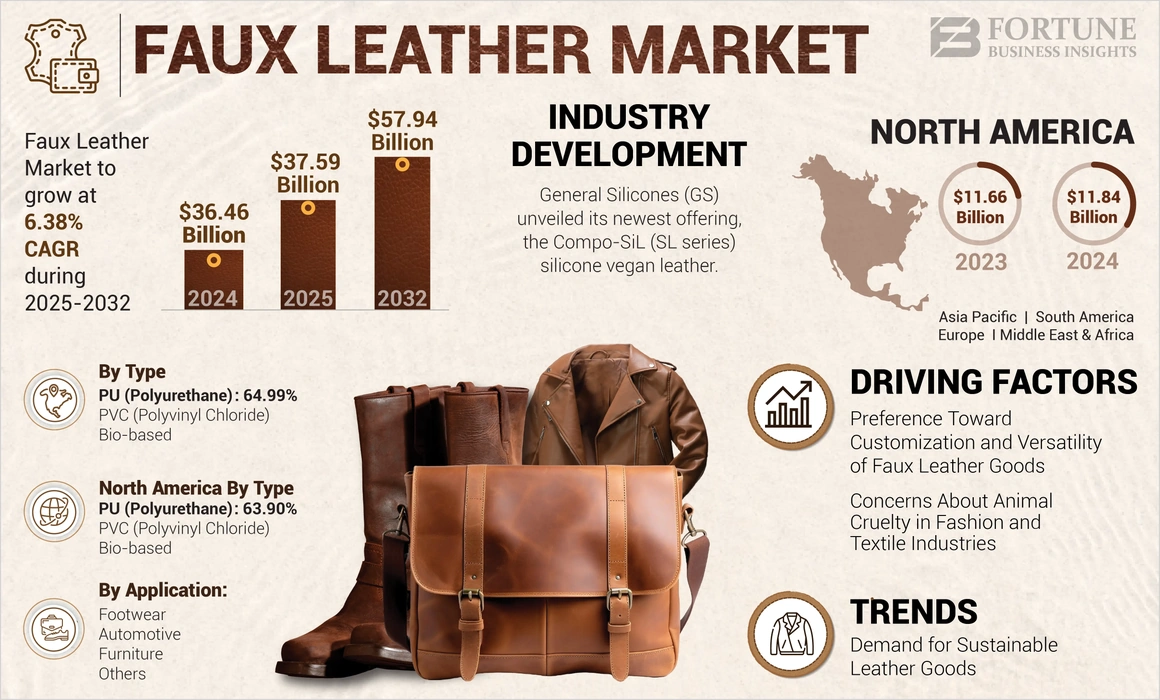
Illustrative image related to pu faux leather
How Is Sustainability Influencing Sourcing Decisions in the PU Faux Leather Sector?
Sustainability is becoming a central tenet in the sourcing of PU faux leather. The environmental impact of traditional leather production, which often involves harmful chemicals and significant water usage, has led many buyers to seek alternatives. PU leather, while not without its challenges—such as being petroleum-based and non-biodegradable—offers a lower environmental footprint compared to genuine leather.
International B2B buyers are increasingly prioritizing ethical sourcing practices, which include the need for transparency in supply chains. Certifications such as Global Organic Textile Standard (GOTS) and OEKO-TEX® ensure that the materials used in PU leather production meet stringent environmental and social criteria. Buyers are advised to partner with suppliers who can demonstrate compliance with these standards, as this not only enhances brand reputation but also aligns with the growing consumer demand for ethically produced goods.
Moreover, the integration of recycled materials in the production of PU leather is gaining traction. Some manufacturers are exploring ways to incorporate post-consumer waste into their products, creating a circular economy that reduces reliance on virgin plastics. This trend not only addresses sustainability concerns but also appeals to eco-conscious buyers looking to mitigate their environmental impact.
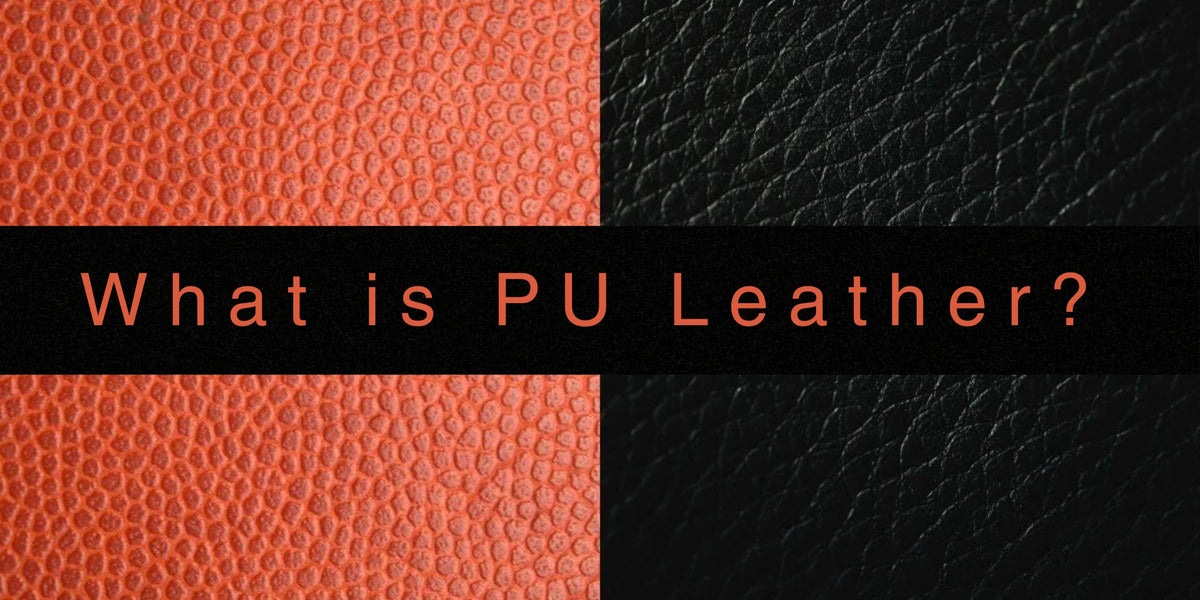
Illustrative image related to pu faux leather
What Is the Historical Evolution of PU Faux Leather in B2B Markets?
The evolution of PU faux leather dates back to the mid-20th century when it was first introduced as a cost-effective alternative to genuine leather. Initially, its use was primarily confined to budget-friendly products, with limited appeal in higher-end markets. However, advancements in technology and manufacturing processes have significantly enhanced the quality and aesthetics of PU leather, allowing it to penetrate various sectors, including fashion, automotive, and furniture.
Over the decades, the perception of PU leather has shifted, particularly as consumers began to prioritize ethical and sustainable options. The rise of veganism and eco-consciousness has propelled PU leather into the spotlight as a viable option for those seeking cruelty-free alternatives. Today, it serves not only as a budget-friendly solution but also as a stylish and versatile material that meets modern consumer demands.
This historical context is crucial for B2B buyers who must navigate the complexities of sourcing PU leather in an increasingly competitive market. Understanding the evolution of this material can inform strategic sourcing decisions, allowing businesses to capitalize on emerging trends while aligning with ethical and sustainable practices.
Frequently Asked Questions (FAQs) for B2B Buyers of pu faux leather
-
How do I identify high-quality PU faux leather for my business?
To identify high-quality PU faux leather, examine the material’s texture, smell, and appearance. Premium PU leather should have a soft, supple feel and a consistent grain pattern without visible imperfections. Look for certifications that indicate compliance with health and environmental standards, as these can assure you of the material’s quality. Request samples from suppliers to evaluate the durability and colorfastness under different conditions, as well as to ensure it meets your specific product requirements. -
What are the key advantages of using PU faux leather in my products?
PU faux leather offers several advantages, including lower production costs, a wide range of colors and styles, and ease of maintenance. It is waterproof and does not absorb stains, making it ideal for various applications such as furniture, fashion, and automotive interiors. Additionally, being a vegan alternative, it appeals to environmentally conscious consumers. However, ensure that the specific type of PU leather you choose meets your durability and aesthetic standards, as some variations can be less robust. -
How can I ensure compliance with international trade regulations when sourcing PU faux leather?
To ensure compliance with international trade regulations, familiarize yourself with the import/export laws of your country and the supplier’s country. Verify that the PU leather meets the required safety and environmental standards, such as REACH in Europe or other local regulations. Work with suppliers who can provide necessary documentation, including Material Safety Data Sheets (MSDS) and compliance certificates. Consulting with a trade compliance expert can also help navigate complex regulations and avoid costly delays. -
What is the minimum order quantity (MOQ) for PU faux leather, and how does it vary by supplier?
Minimum order quantities for PU faux leather can vary significantly based on the supplier, production capabilities, and material type. Typically, MOQs range from 100 to 1,000 meters for bulk orders. Smaller suppliers may offer flexible MOQs, while larger manufacturers often require higher volumes to justify production runs. Always discuss MOQs upfront with potential suppliers to align your purchasing needs with their capabilities, and consider negotiating terms that accommodate your order size. -
What payment terms should I expect when sourcing PU faux leather internationally?
Payment terms for international sourcing can vary, but common practices include a 30% deposit upfront with the balance due upon shipment or delivery. Some suppliers may offer letters of credit or escrow services for larger transactions to mitigate risk. Always clarify payment methods accepted (e.g., bank transfer, PayPal, or credit terms) and ensure that these terms are detailed in your contract. It’s advisable to establish a good relationship with your supplier to negotiate favorable terms. -
How can I vet suppliers of PU faux leather effectively?
Vetting suppliers requires thorough research and due diligence. Start by checking their business credentials, including registration and industry certifications. Request references from other clients and evaluate their reputation through online reviews or industry forums. Visiting the supplier’s manufacturing facility, if feasible, can provide insights into their production processes and quality control measures. Additionally, consider their ability to provide samples and compliance documentation to ensure they meet your quality and ethical standards. -
What quality assurance measures should I implement when sourcing PU faux leather?
Implementing quality assurance measures begins with setting clear specifications for the PU faux leather you require. Establish a quality control process that includes receiving samples, conducting physical inspections, and testing for durability and colorfastness. Collaborate with suppliers to agree on quality standards and inspection protocols before production starts. Regular audits of the supplier’s processes and output can help maintain consistent quality and address issues promptly. -
What logistics considerations should I be aware of when importing PU faux leather?
When importing PU faux leather, consider factors such as shipping methods, customs clearance, and transportation costs. Choose reliable logistics partners experienced in handling textile materials to ensure timely and safe delivery. Factor in lead times for production and shipping, as well as potential delays at customs. Understanding the tariffs and duties applicable to your product can also help in budgeting effectively. Having a contingency plan for logistics disruptions is advisable to maintain supply chain continuity.
Top 6 Pu Faux Leather Manufacturers & Suppliers List
1. Manuel Dreesmann – Fiona Tote Bag
Domain: manuel-dreesmann.com
Registered: 2017 (8 years)
Introduction: What is PU leather – and why you should avoid! Skip to content Worldwide Free Shipping Over 100€ Manuel-dreesmann Open navigation menu New New Fiona bag Tote Bag With Zipper The Fiona Bag The perfect shoulder bag Tote bag with zipper Carry your belongings safely Bags Bags Tote Bags Shoulder Bags Crossbody Bags Handbags Clutches Pouches & Belt Bags Backpacks The Croissant Bag Discover our bestselle…
2. Decorative Fabrics Direct – PU Leather & Faux Leather
Domain: decorativefabricsdirect.com
Registered: 2004 (21 years)
Introduction: PU Leather & Faux Leather | Vinyl Upholstery Fabric, Free Shipping Coupon Code: SHIPFREE for Most $199 Orders, Available in various colors including Black, Gray, Blue, Turquoise, Aqua, Brown, Beige, Green, Orange, Coral, Purple, Red, Pink, White, Yellow, Gold. Suitable for Furniture, Automotive, Marine use. Brands include Naugahyde, Omnova Boltaflex, Nassimi, Spradling. Types include Vinyl (PVC), …
3. Carl Friedrik – PU Leather
Domain: carlfriedrik.com
Registered: 2016 (9 years)
Introduction: PU leather, also known as artificial or imitation leather, is made from polyurethane, a synthetic plastic. It is created by applying a PU resin coating to natural fabrics like nylon, cotton, or vinyl, mimicking the look and feel of animal leather. 100% PU leather is vegan-friendly, while PU applied to split leather is not. Benefits include being softer, lighter, more UV resistant, easy to clean, a…
4. Yorkshire Fabric Shop – PU Leather
Domain: yorkshirefabricshop.com
Registered: 2014 (11 years)
Introduction: PU leather is synthetic leather made from polyurethane, a plastic that mimics the feel and look of real leather without harming animals. Faux leather, also known as fake leather, is man-made and designed to resemble genuine leather, often using a polyester base and can include materials like PVC or polyurethane. Both types are water-resistant, easy to clean, and offer a similar softness and appear…
5. HowStuffWorks – PU Leather Insights
Domain: home.howstuffworks.com
Registered: 1998 (27 years)
Introduction: PU (Polyurethane) leather is an artificial leather made from polyurethane, a type of plastic. It is 100% vegan, offering a more affordable alternative to genuine leather. PU leather is water-resistant, easy to clean, and suitable for use in kitchens and bars. There are two types of PU leather: full-synthetic (100% vegan) and semi-synthetic (contains a natural leather base). PU leather does not age…
6. Reddit – Faux Leather vs. Real Leather
Domain: reddit.com
Registered: 2005 (20 years)
Introduction: Faux leather is cheap and easy to find but is easily damaged and hard to repair. It may be in a damaged state when purchased and can become irreparably damaged within weeks or months. Real leather is expensive and hard to find, but it is recommended to either save for real leather or use denim, which is also stylish and versatile. The post advises against using faux leathers made of plastic.
Strategic Sourcing Conclusion and Outlook for pu faux leather
In the evolving landscape of PU faux leather, strategic sourcing becomes paramount for international B2B buyers seeking quality and sustainability. The affordability of PU leather makes it an attractive option for various applications, from furniture to fashion. However, it is crucial to weigh the pros and cons, particularly regarding durability and environmental impact. Buyers must focus on transparency in the supply chain, ensuring that the products meet both quality and ethical standards.
As you navigate sourcing decisions, consider the long-term value of your investments. While PU leather can serve immediate needs, its limitations may necessitate more frequent replacements, impacting total cost of ownership. Engaging with suppliers who prioritize sustainable practices can enhance your brand’s reputation and align with global trends toward eco-friendliness.
Looking ahead, the demand for high-quality, ethically sourced materials will only grow. By prioritizing strategic sourcing, you position your business to adapt to market shifts and consumer preferences. Take the next step in your sourcing strategy by exploring partnerships with suppliers who can deliver innovative, sustainable PU leather solutions tailored to your market needs in Africa, South America, the Middle East, and Europe.
Important Disclaimer & Terms of Use
⚠️ Important Disclaimer
The information provided in this guide, including content regarding manufacturers, technical specifications, and market analysis, is for informational and educational purposes only. It does not constitute professional procurement advice, financial advice, or legal advice.
While we have made every effort to ensure the accuracy and timeliness of the information, we are not responsible for any errors, omissions, or outdated information. Market conditions, company details, and technical standards are subject to change.
B2B buyers must conduct their own independent and thorough due diligence before making any purchasing decisions. This includes contacting suppliers directly, verifying certifications, requesting samples, and seeking professional consultation. The risk of relying on any information in this guide is borne solely by the reader.
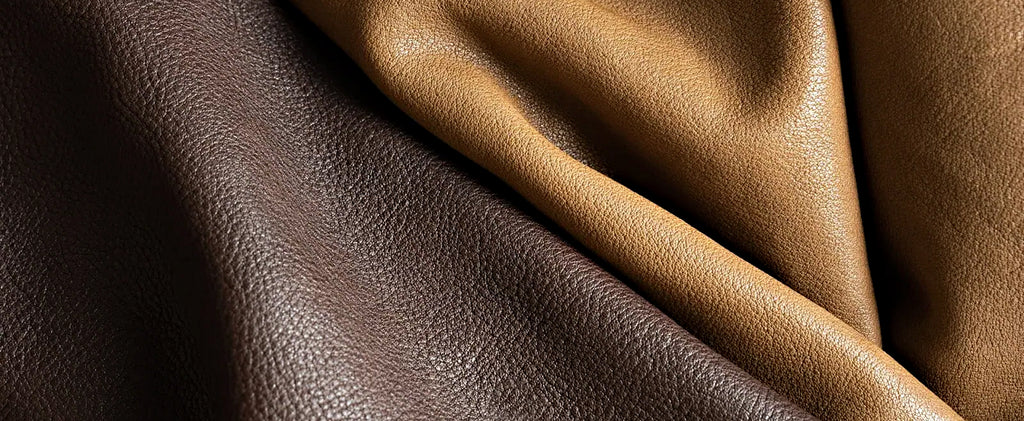
Illustrative image related to pu faux leather


